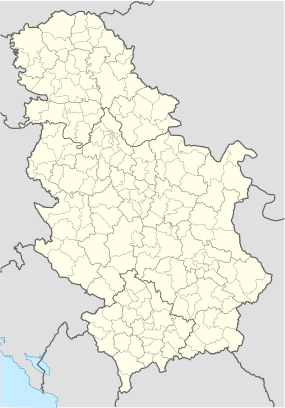Sirmium

Ruins of Imperial Palace at Sirmium
|
|
| Location | Sremska Mitrovica, Serbia |
|---|---|
| Region | Pannonia |
| Coordinates | 44°59′N 19°37′E / 44.983°N 19.617°ECoordinates: 44°59′N 19°37′E / 44.983°N 19.617°E |
| Type | Settlement |
| History | |
| Founded | Before 4th century BC |
| Abandoned | 582 |
| Cultures | Illyrian, Celt, Roman, Byzantine |
| Site notes | |
| Condition | In ruins |
| Public access | Yes |
Sirmium was a city in the Roman province of Pannonia. First mentioned in the 4th century BC and originally inhabited by Illyrians and Celts, it was conquered by the Romans in the 1st century BC and subsequently became the capital of the Roman province of Pannonia Inferior. In 294 AD, Sirmium was proclaimed one of four capitals of the Roman Empire. It was also the capital of the Praetorian prefecture of Illyricum and of Pannonia Secunda. Sirmium was located on the Sava river, on the site of modern Sremska Mitrovica in northern Serbia. ¨The site is protected as an Archaeological Site of Exceptional Importance. The modern region of Syrmia (Srem) was named after the city.
Sirmium had 100,000 inhabitants and was one of the biggest cities of its time. Colin McEvedy, however, put the population at only 7,000, based on the size of the archaeological site.Ammianus Marcellinus called it "the glorious mother of cities".
Remains of Sirmium stand on the site of the modern-day Sremska Mitrovica, 55 km west of Belgrade (Roman Singidunum) and 145 km away from Kostolac (Roman Viminacium). Archaeologists have found traces of organized human life on the site of Sirmium dating from 5,000 BC. The city was firstly mentioned in the 4th century BC and was originally inhabited by the Illyrians and Celts (by the Pannonian-Illyrian Amantini and the Celtic Scordisci). The Triballi king Syrmus was later considered the eponymous founder of Sirmium, but the roots are different, and the two words only became conflated later. The name Sirmium by itself means "flow, flowing water, wetland", referring to its close river position on the nearby Sava.
...
Wikipedia

